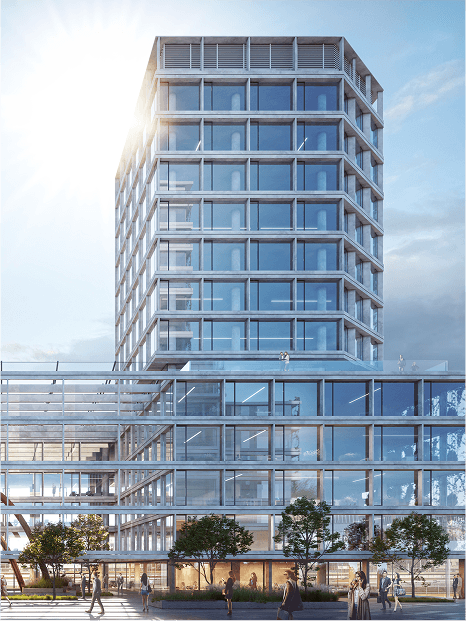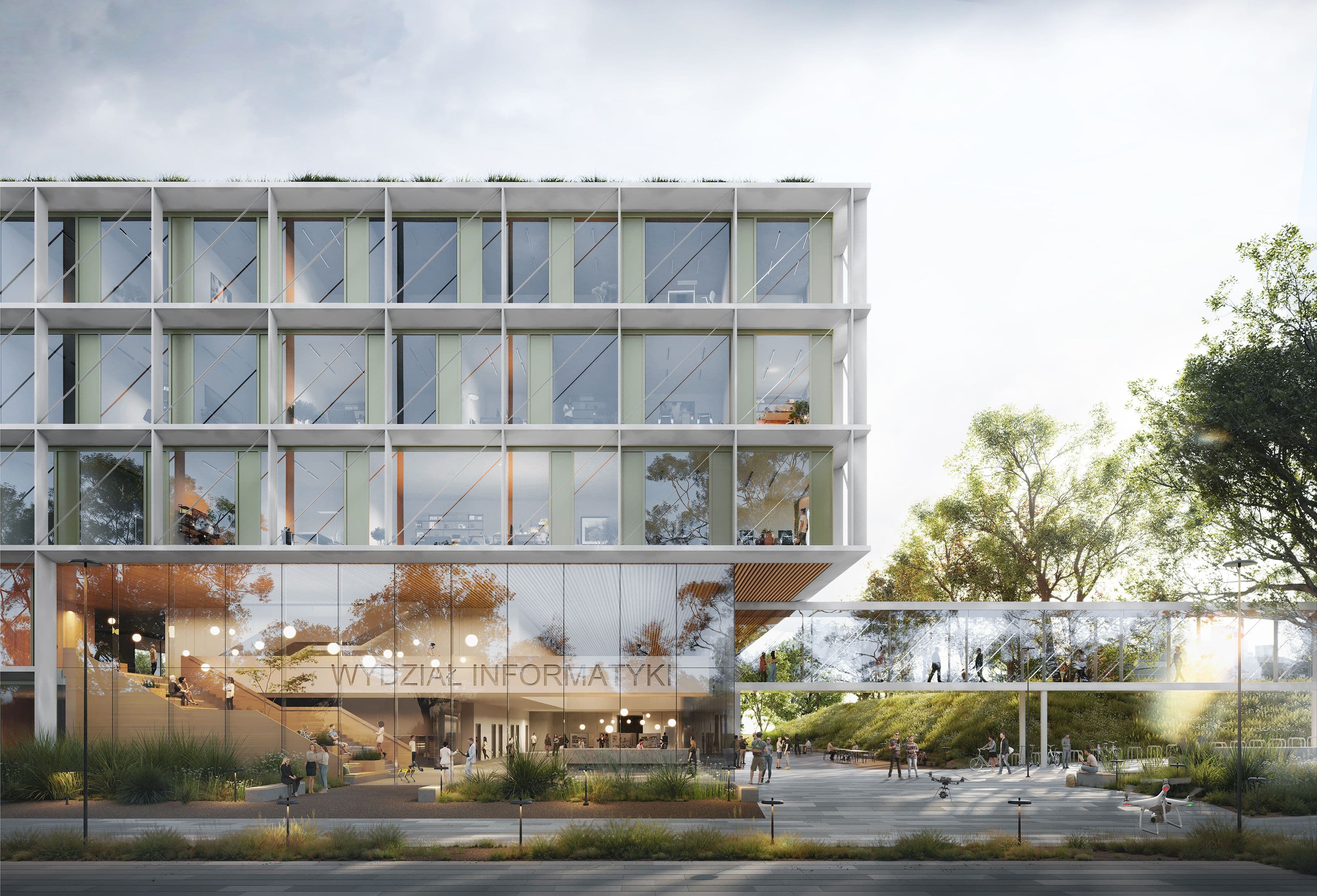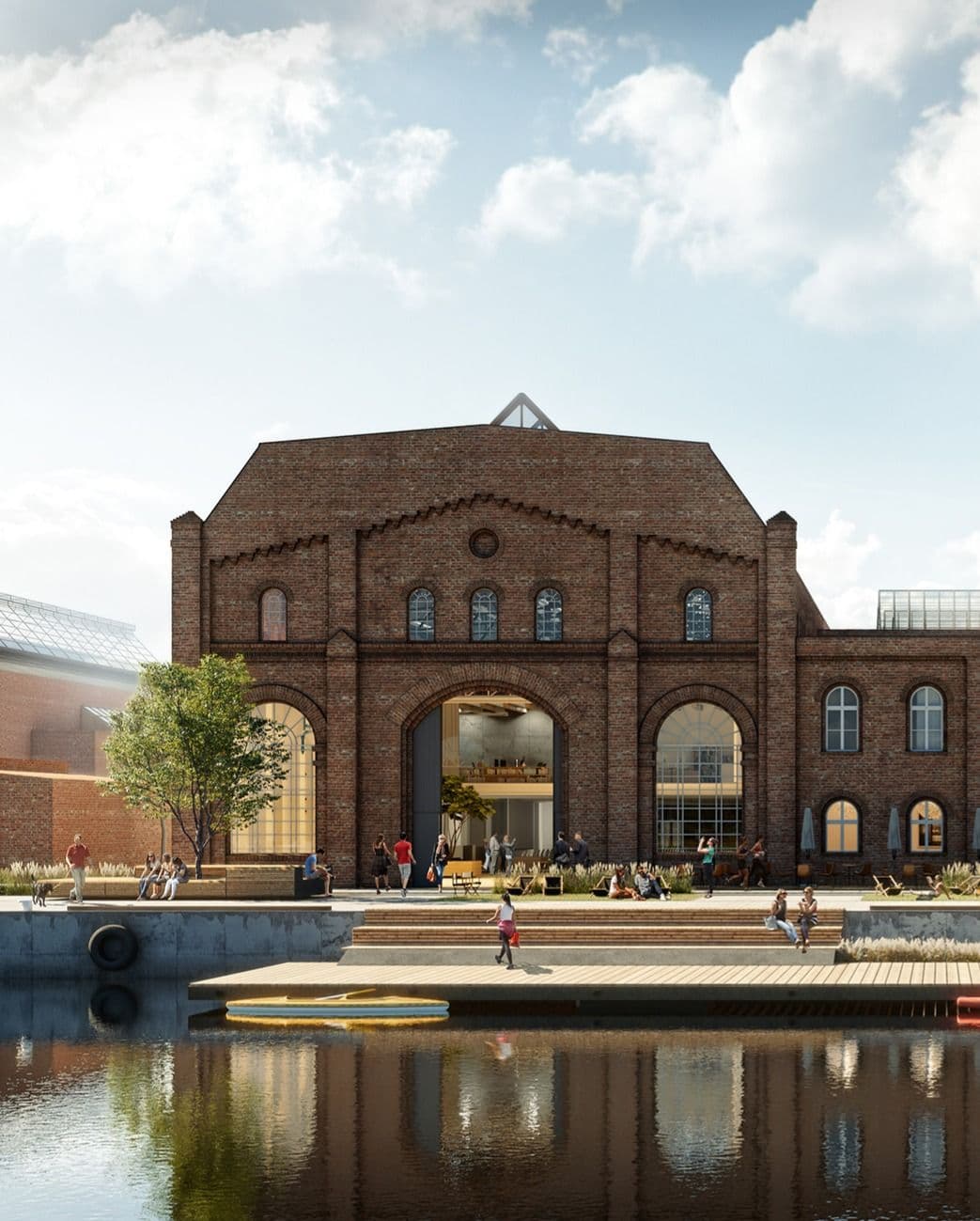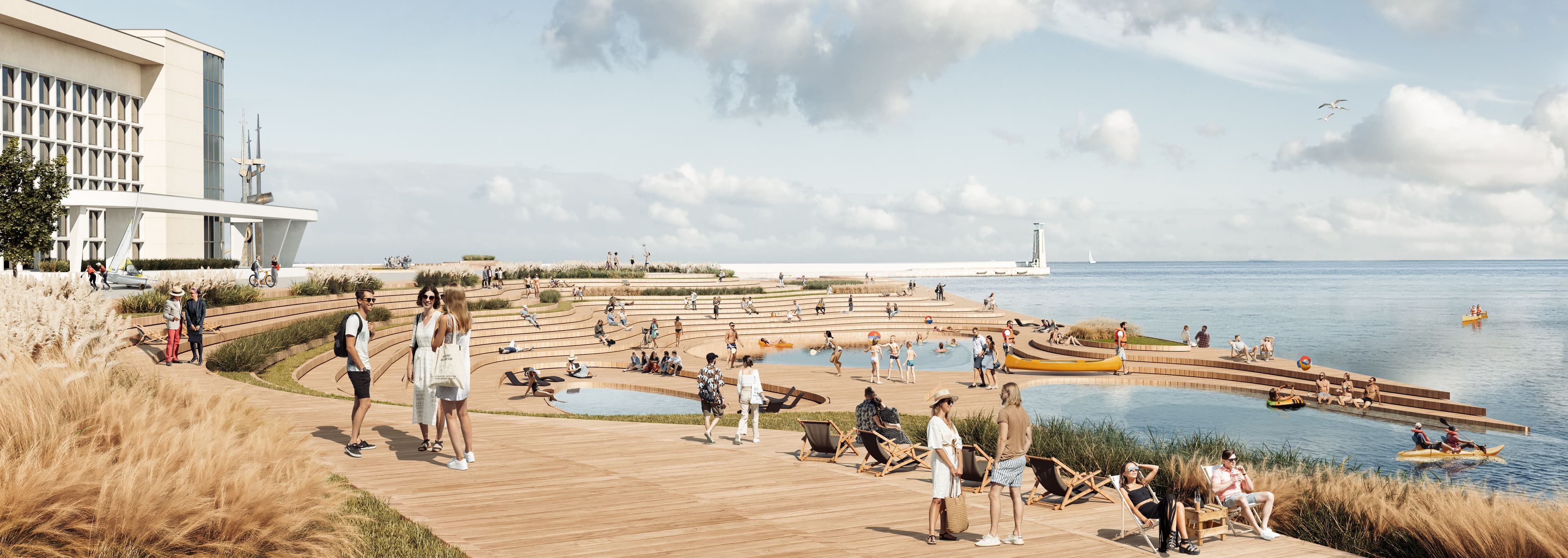
Future Pier
A Vision for Gdynia’s Sustainable Urban Development
Project info
City
GDYNIA
Client
City of Gdynia
Category
Public realm
Year
2021
Status
Competition
Vis
Bitlens
Cooperation
Designbotic
Project info
City
GDYNIA
Client
City of Gdynia
Category
Public realm
Year
2021
Status
Competition
Vis
Bitlens
Cooperation
Designbotic
intro
Future Pier is a visionary urban proposal for Gdynia’s waterfront that redefines public space through a fusion of modernist heritage, ecological resilience, and human-centered design — a dynamic response to contemporary urban challenges, climate change, and the need for inclusive, vibrant city life.
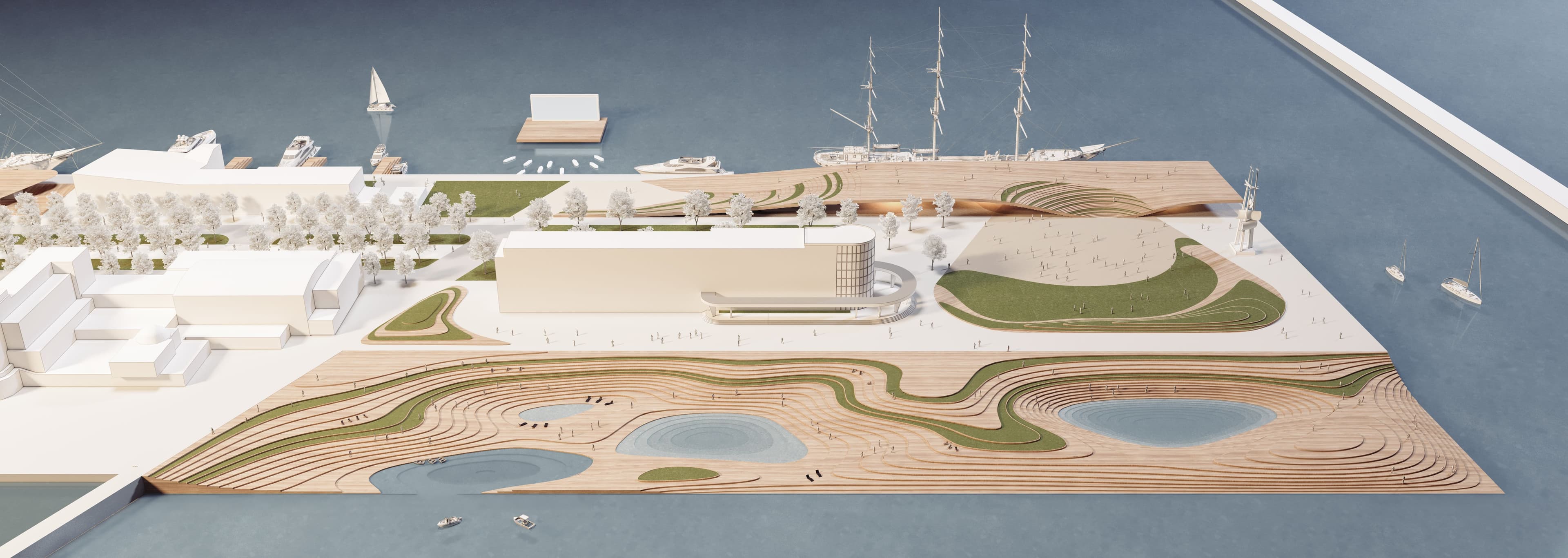
Future Pier: A Vision for Gdynia’s Sustainable Urban Development
Gdynia, a city of avant-garde spirit and bold ambition, has always embodied the belief that anything is possible. Situated at the intersection of land and sea, its founding in the interwar period was a triumph of engineering, urban planning, and modernist architecture. Today, Gdynia faces new challenges, requiring innovative urban solutions that address global issues while catering to the needs of local communities. The Future Pier project envisions a sustainable, multifunctional urban space that blends history, ecology, and human-centered design.
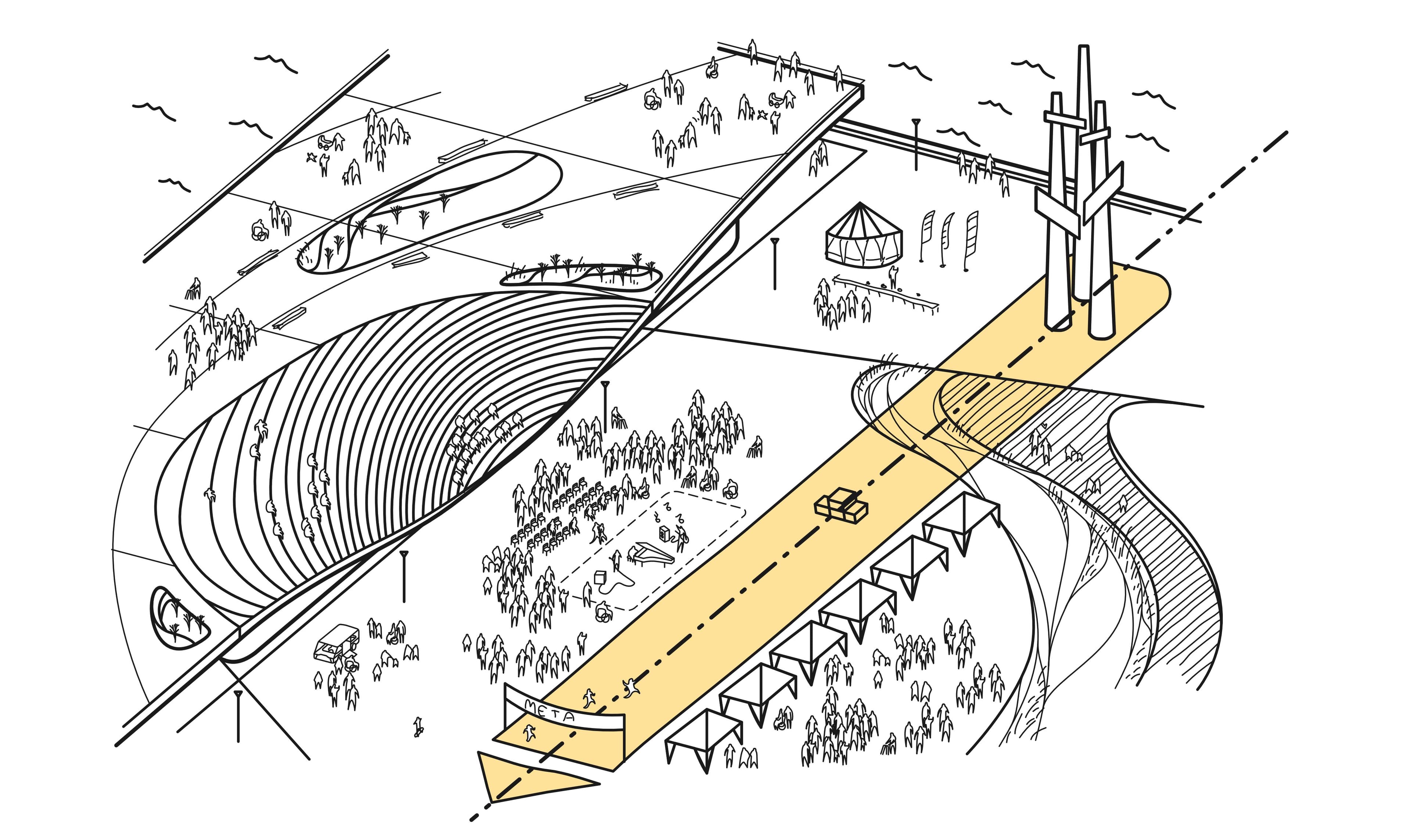
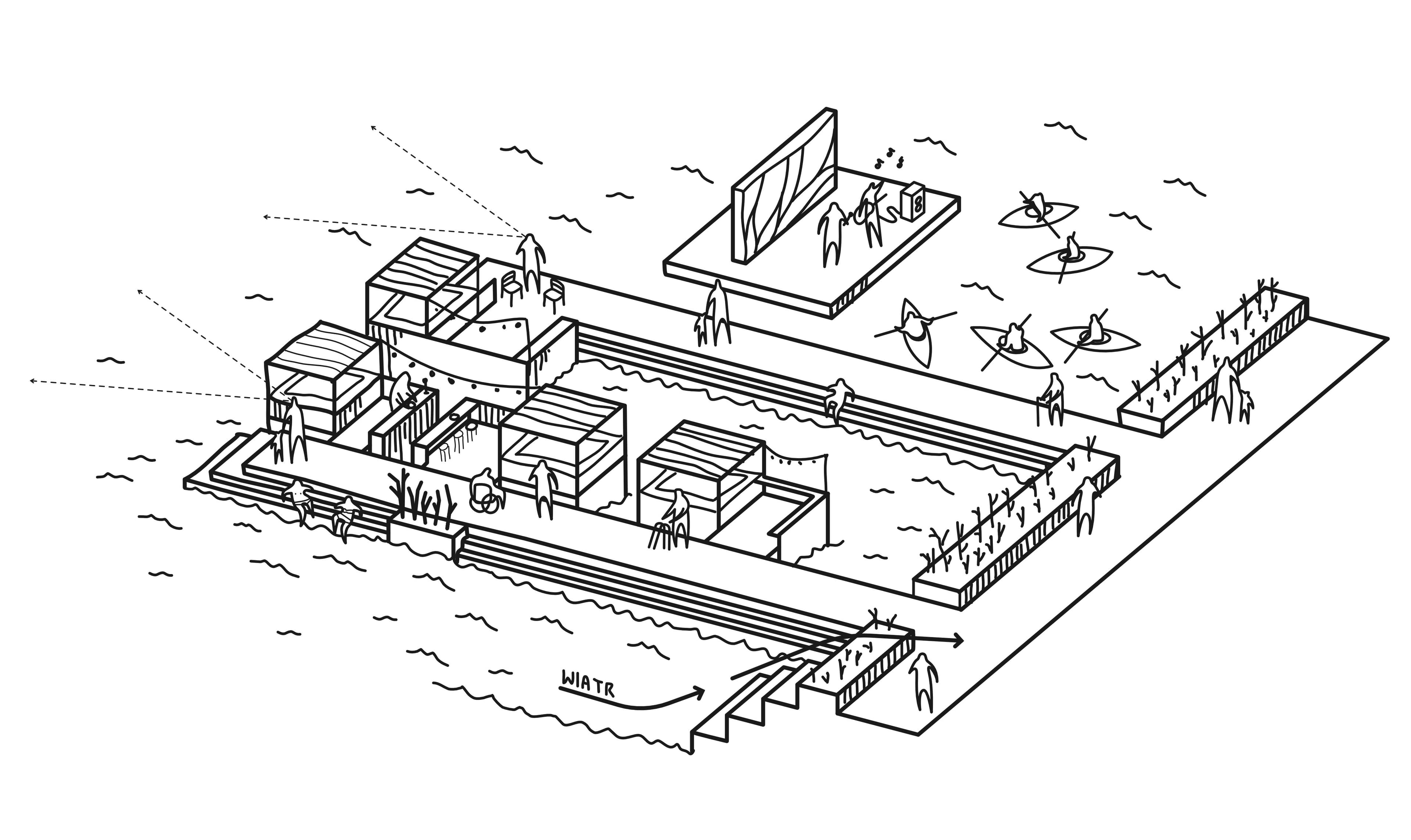
Global Challenges with Local Impact
Modern cities must navigate an increasingly complex landscape shaped by climate change, economic shifts, and social transformations. In Gdynia, the consequences of climate change are becoming more apparent, with extended dry spells, heatwaves, sudden storms, and urban flooding. These changes disproportionately affect vulnerable populations, including the elderly, children, and people with disabilities. Architects and planners must respond with adaptive, resilient designs that mitigate environmental impact while enhancing urban livability.
One of the key urban challenges today is the excessive consumption of natural resources. Buildings alone account for approximately 40% of global energy consumption and 36% of greenhouse gas emissions in the EU. Future developments must embrace energy-efficient, carbon-neutral solutions that consider the entire lifecycle of buildings, from construction to demolition. Additionally, urban spaces must prioritize pedestrian and cycling infrastructure over car-centric planning to reduce carbon footprints and improve air quality.
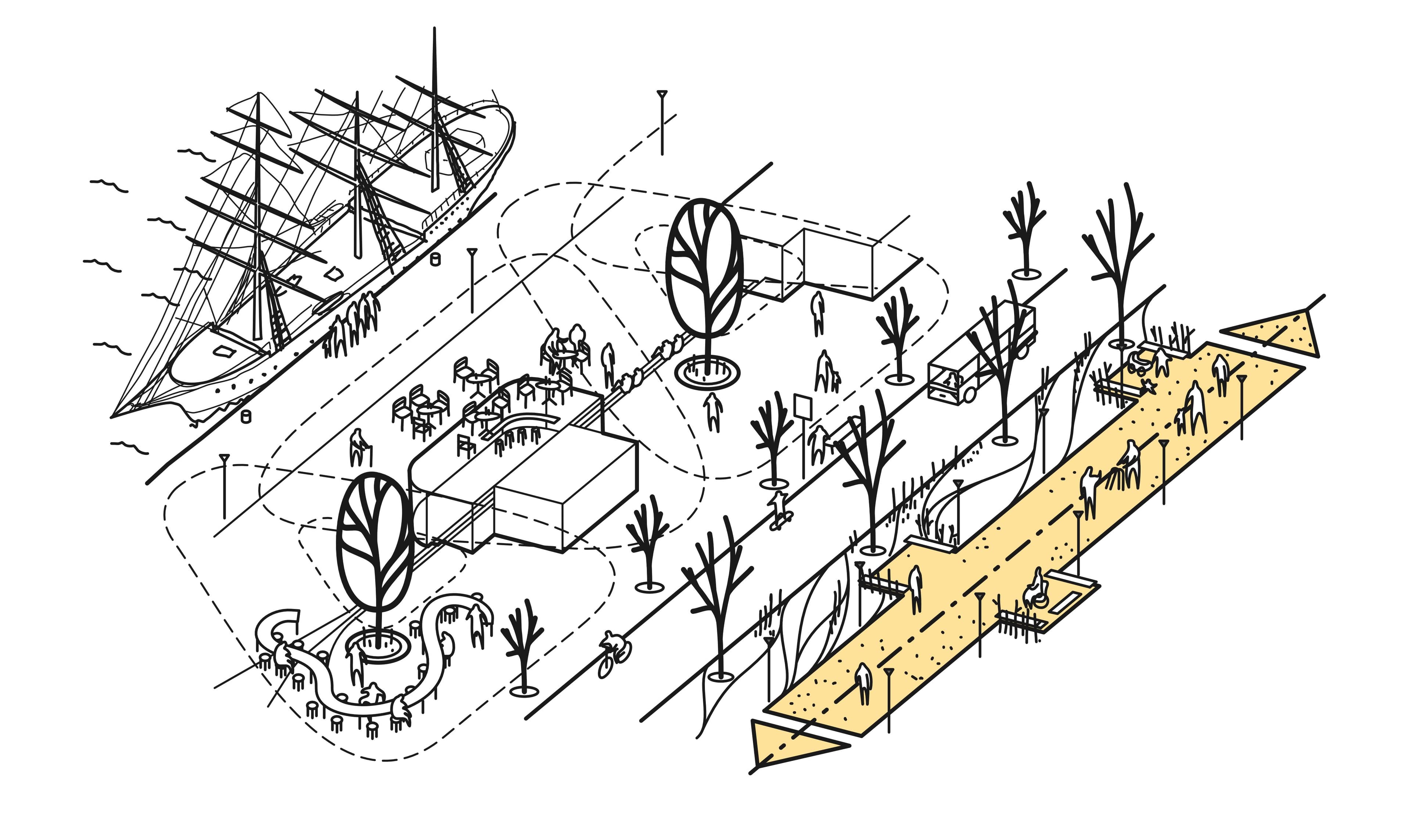
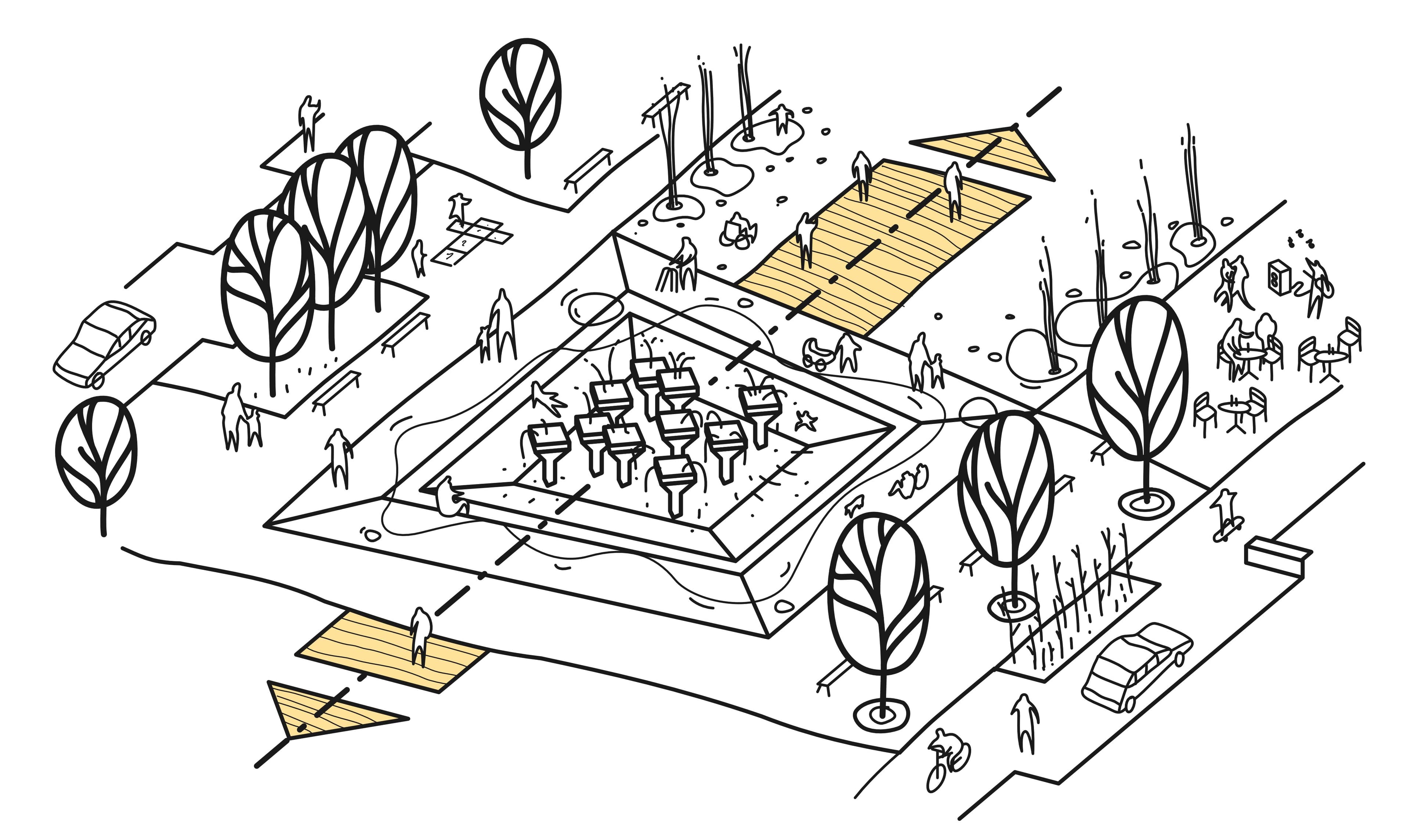
A City for Its Residents
Over the years, many city centers worldwide, including those in Poland, have become financially inaccessible to the average resident due to gentrification and rising property values. Gdynia is no exception, as speculative real estate investments contribute to the growing phenomenon of “dark windows” in prime urban areas. While systemic economic regulations are beyond the scope of urban planners, thoughtful urban design can help reclaim public spaces for residents, reinforcing the idea that cities should serve their people.
Modernist Legacy and the Need for Human-Scale Spaces
Gdynia’s urban identity is rooted in its modernist heritage, structured around three primary compositional axes: the Representative Axis, Starowiejska Street, and Świętojańska Street. Skwer Kościuszki and the Southern Pier are integral parts of this urban framework. However, despite their historical significance, these spaces currently suffer from a dominance of vehicular traffic, an outdated layout, and insufficient green areas, making them less welcoming for pedestrians.
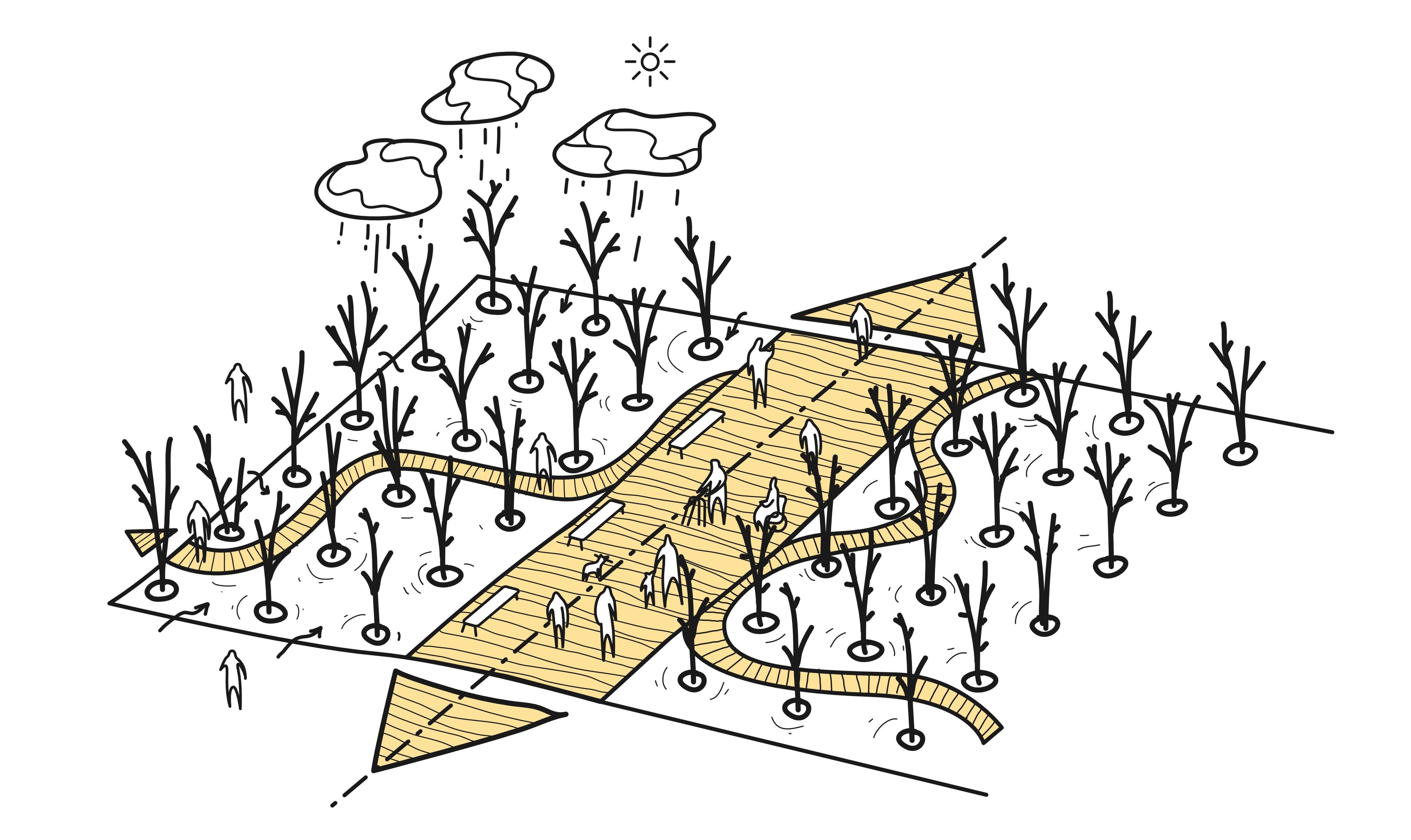
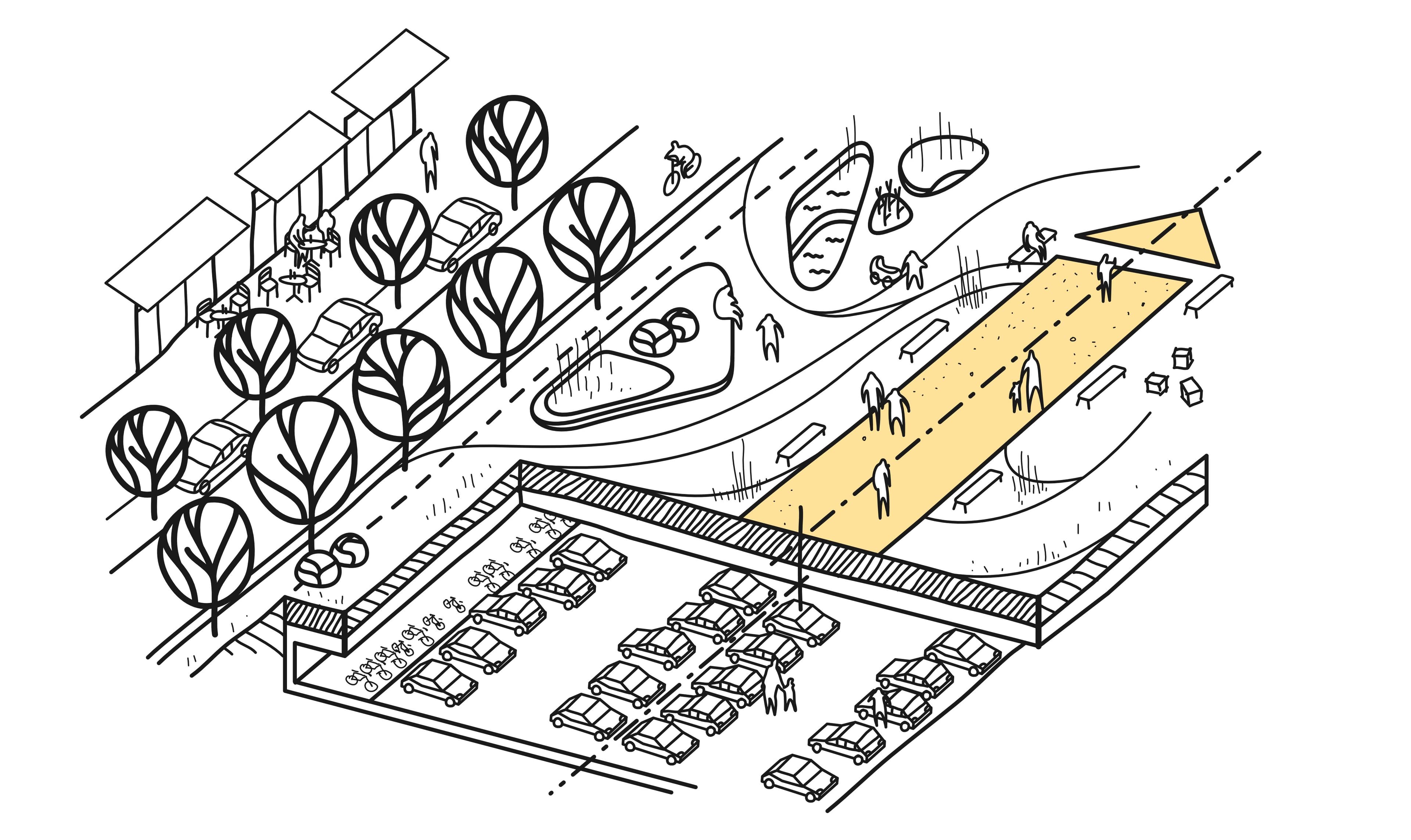
The Project Vision
The Future Pier project aims to transform Skwer Kościuszki and the Southern Pier into a model urban space that balances historical preservation with contemporary needs. The proposal introduces:
Green Skwer: A reimagined urban square enriched with greenery, seating, and a pedestrian-friendly layout. Beneath it, an underground parking facility will reduce surface-level car traffic.
Water Plaza: A recreational space integrating water features such as rain gardens, mist fountains, and an artificial lagoon. This area will enhance urban cooling and stormwater retention.
The Green Axis: A redesigned pedestrian corridor with permeable surfaces and tree-lined pathways that mitigate urban heat and promote biodiversity.
Multifunctional Pavilions: Repurposing existing waterfront structures and adding new ones to house cultural, gastronomic, and community-oriented functions.
Floating Stage and Food Boats: A cultural and culinary hub where performances can be viewed from boats, the shore, or nearby rooftops.
Forum Morskie: A space for public dialogue, events, and exhibitions, symbolizing Gdynia’s maritime heritage while fostering civic engagement.
Cultural Center: A proposed alternative use for the Gdynia Aquarium site, transforming it into a hub for artistic and social initiatives.
The Lagoon: A new recreational waterfront space with floating pools and tidal inlets, offering an interactive connection with the sea.
Enhancing Accessibility and Well-being
A fundamental goal of the project is to create an inclusive public space that accommodates all users, including people with reduced mobility. The design prioritizes barrier-free pathways, shaded seating areas, and wind protection features based on computational simulations. Additionally, the project proposes smart urban sensors to monitor environmental conditions, ensuring continuous adaptation to changing climate realities.
The Future Pier vision also promotes an active lifestyle, with cycling lanes, pedestrian-friendly streets, and electric shuttle services replacing car-dominated zones. By fostering walkability and alternative mobility options, the project aligns with global urban sustainability goals.
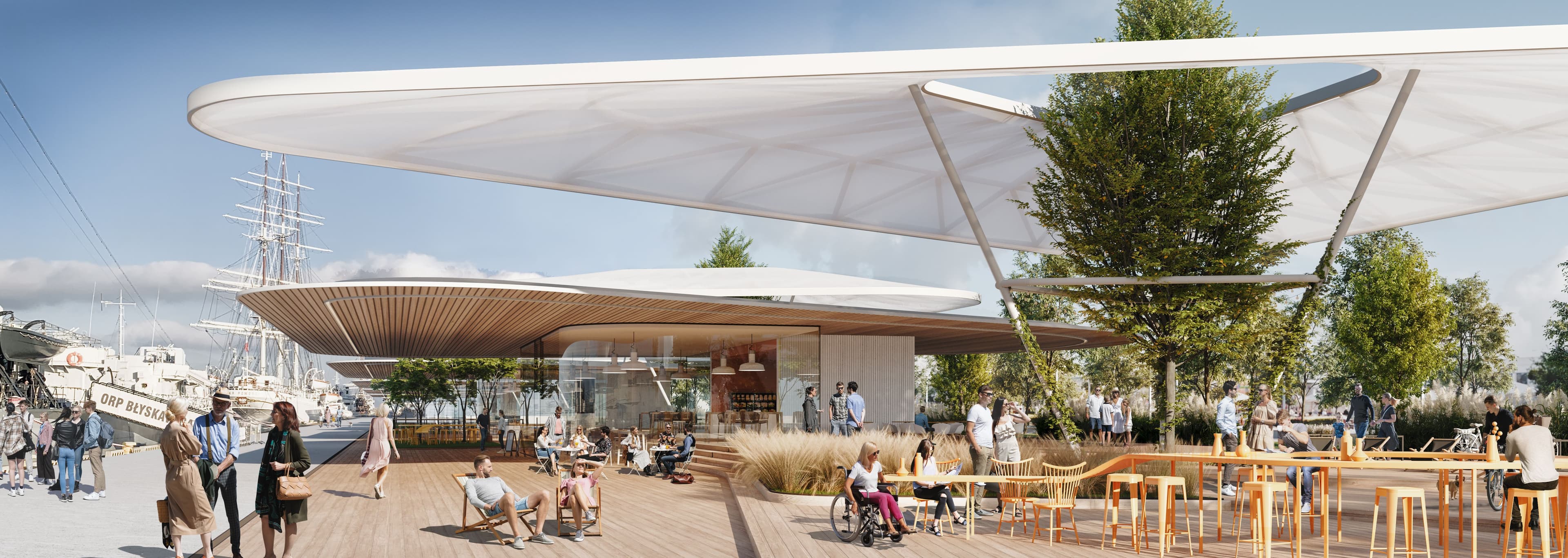
Addressing Climate Resilience
To combat climate-related challenges, the project integrates green infrastructure solutions, including:
Extensive tree planting for shade and air purification.
Green roofs and rain gardens for water retention and cooling.
Permeable pavements to reduce surface runoff and urban flooding.
Architectural elements designed to mitigate strong coastal winds and excessive heat.
A Future-Oriented Urban Model
The Future Pier concept is not just about redesigning a public space—it is a statement on how cities can address contemporary challenges while preserving their unique identities. By integrating historical legacy with cutting-edge sustainability strategies, the project sets a precedent for resilient, human-centric urban development.
Just as Gdynia’s founders once envisioned a bold, modern city by the sea, today’s planners and designers have the opportunity to shape a forward-thinking urban landscape that will serve future generations. The Future Pier is a testament to the city’s enduring spirit of innovation and its commitment to sustainable growth.
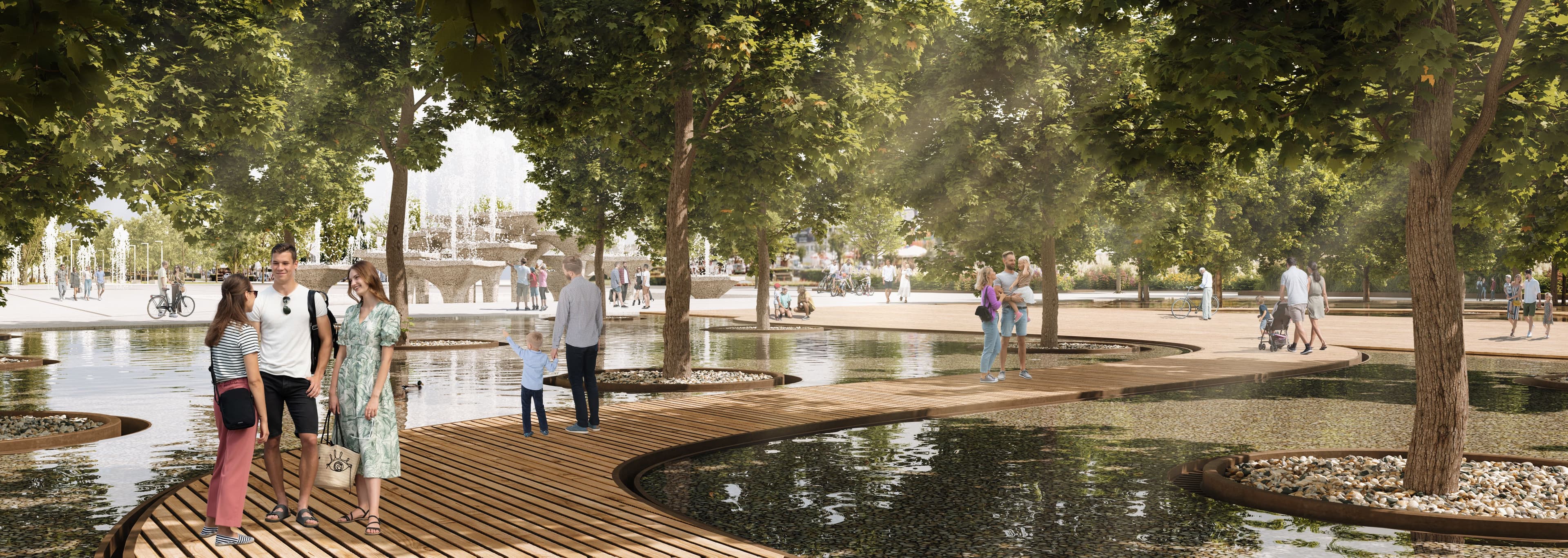
Got a project in mind? Let us know how we can help you.
